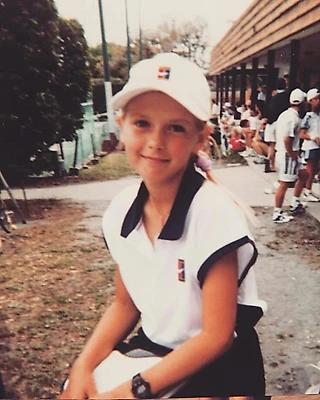Why Is Tennis So Far Behind Other Sports In Data Analytics?
Jim Pagels
Data analytics is coming to every sport in some capacity, though at varying speeds. Baseball has of course seen the sabermetric revolution of the last couple decades, and basketball, football, and hockey have all made great strides in the last few years.
Other sports have been more anemic, though, with one of the more glaring holes being tennis. The most comprehensive data out there, Hawkeye, which tracks the speed, trajectory, and spin rate of every shot, is not publicly available, and fans and reporters are usually subject to only the most trite and largely useless data such as break point percentage, aces, and winner totals.
At the 2015 MIT Sloan Sports Analytics Conference this past weekend in Boston, Tennis Abstract founder Jeff Sackmann presented work he’s done in tennis analytics—a field he seems to be alone in pioneering, at least in the public realm—and discussed some of the hurdles widespread tennis analytics face.
Tournaments: Tennis is a fragmented, decentralized landscape. Sure, there are the ATP and WTA with some degree of power over tournaments, but most events are very autonomous, and it’s difficult to align a uniform data tracking system when directors are most interested in maximizing their sponsorship deals with Rolex and Lexus. Many tournaments supply only physical paper stats PDFs to journalists, who then have to arduously transcribe the data back into their own computers for analysis.
Players: Individual sports are not as incentivized to gather analytics, as there’s no team-constructing component to the game. There’s no need to isolate individual contributions in tennis, since we can already tell just how much a player contributed to his or her success.
Sport: Given the lack of parity in men’s tennis, the public demand for analytics may not be too great, as even the most comprehensive data will be unlikely to turn the likes of John Isner or Gilles Simon into a regular title contender.
Sackmann says that he doesn’t expect to see anyone—players, coaches, or fans—paying for numbers any time soon, so for now, he is crowdsourcing match data. Sackmann has recruited an army of 30 volunteers meticulously tracking the shot type and location of every stroke for over 667 matches—a tiny drop in the bucket as Sackmann notes, but still a vast improvement over what was previously out there. If you want to help with the tracking project, visit Sackmann’s website and sign up.
While that match tracking data is evolving, Sackmann says the best use of analytics right now is not so much in performance on the court but rather in selecting which courts to actually play on.
Which events to play is an easy decision for top players, but for players ranked outside the top 10, who often have to decide between multiple events of varying ranking points and prize money each week, these decisions can have huge monetary implications.
Players have to decide between bigger events with more prize money or ranking points, but also a tougher field that could knock them out early versus smaller events with fewer ranking points and prize money but an easier field they’d be more likely to progress further in. Sackmann says the decision is usually pretty basic, though: Players should almost select the bigger event, with the only exception being if a player is seeded in the smaller tournament but not the larger one.
Follow Jim Pagels on Twitter at @jimpagels
>
Просмотров всех постов блога на эту неделю:
Просмотров всех постов блога в марте 2015 года:
Просмотров всех постов блога в 2014 году: 1,158,010
Просмотров всех постов блога в январе 2015 года: 196,079
Просмотров всех постов блога в феврале 2015 года: 133433
Просмотров всех постов блога в 2015 году:
Прим.: начало отчета просмотров - 21.04.2014









Джим Пейджелс
Статистическая аналитика приходит в любой вид спорта, в той или иной мере, раньше или позже. Бейсбол безусловно пережил сэйберметрическую (статистический анализ игровых показателей спортсмена) революцию за последние пару десятков лет, и баскетбол, футбол и хоккей значительно продвинулись в этой сфере за последние несколько лет.
В других видах спорта с этим было слабовато, но наиболее зияющий пробел мы имеем в теннисе. Источник наиболее полной информации, система Ястребиный Глаз, фиксирует скорость, траекторию и скорость вращения мяча при каждом ударе, но этой информации нет в общем доступе, и болельщикам и журналистам приходится довольствоваться банальными и преимущественно бесполезными данными, такими как процент брейк-пойнтов, эйсов и количества виннеров.
В 2015-ом году на конференции "MIT Sloan Sports Analytics" на прошлой неделе в Бостоне, основатель Теннисной Аннотации, Джефф Сакманн представил своё исследование в сфере теннисной аналитики - сфере выглядящей неизведанной, по крайней мере, для широкой публики - и обсудил наиболее распространённые барьеры стоящие перед развитием теннисной аналитики.
Турниры: Теннис разобщённое, децентрализованное пространство. Конечно есть АТР и WTA, обладающие некоторой властью над организаторами турниров, но большинство турниров очень изолированы, очень трудно стандартизировать системы представления данных, когда директора турниров больше всего заинтересованы в расширении их бизнеса со спонсорами, такими как Ролекс и Лексус. Многие турниры предоставляют журналистам статистические отчёты на бумаге, в формате PDF, и приходится маяться с переносом этих данных в более удобные для обработки форматы.
Игроки: Индивидуальный вид спорта не поощряет сбора аналитических данных, так как в игре нет компонентов необходимых для командной игры. Нет необходимости выделять индивидуальный вклад в общий результат, коль скоро мы и так можем сказать, каков личный вклад игрока в его или её успех.
Спортивная специфика: На данный момент в теннисе недостаточно конкурентности, поэтому спрос на аналитические данные не очень велик, ведь даже наиболее полная аналитическая информация вряд ли поможет превратить Джона Изнера или Жиля Симона в главных претендентов на титулы на всех турнирах.
Сакманн говорит, что и не ждёт ничего другого – никаких тренеров, игроков или болельщиков – готовых платить за информацию, поэтому сейчас основной источник данных для него, это краудсорсинг (по аналогии с аутсорсингом). Сакманн прибегает к услугам тридцати волонтёров, тщательно фиксирующих вручную сведения о траекториях мячей и точках их попадания в корт на протяжении 667 матчей, по капле наполняющих резервуар данных, но это уже огромное улучшение по сравнению с тем, что было раньше. Если вы хотите помочь в продвижении этого проекта, зайдите на сайт Сакманна и авторизуйтесь на нём.
Пока этот процесс развивается, Сакманн говорит, что лучшее применение аналитики прямо сейчас, не столько в спортивных достижениях на корте, но скорее, в выборе тех кортов, которые участвуют в процессе сбора данных.
На каком турнире выступать, легко решать топ-игрокам, но для игроков не входящих первую десятку, которым каждую неделю надо принимать решение, на какой турнир из множества вариантов заявиться, с учётом перспективы набора очков и призовых денег, такие решения имеют огромное практическое значение.
Игрок должен решать, заявляться ли ему на более крупный турнир, где призовые больше и дают больше рейтинговых очков, но велик риск раннего вылета. Или напротив, выступить на турнире поменьше рангом с меньшими призовыми и рейтинговыми очками, но с лучшими перспективами продвинуться вперёд. Сакманн утверждает, что обычно выбор делается так: Игроки чаще выбирают более крупные турниры, за исключением тех случаев, когда они входит в число сеяных на меньшем турнире, а на более крупном, не входит.